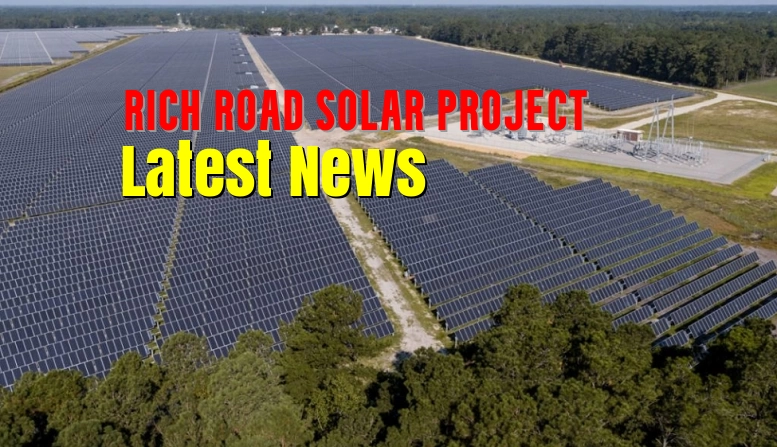What is a Meteor Shower?
A meteor shower is a celestial event where a number of meteors are observed to radiate from one point in the night sky. These meteors are caused by streams of cosmic debris called meteoroids entering Earth’s atmosphere at extremely high speeds, burning up due to friction with the air.
Meteors, commonly known as shooting stars, are the streaks of light we see in the sky caused by these space rocks burning up. Meteoroids are much smaller than asteroids and range vastly in size, from small grains to about 3 feet wide. When a meteoroid survives the fiery plunge through the atmosphere and hits the ground, the remnant is called a meteorite.
When Do Meteor Showers Occur?
Meteor showers are not random events but occur periodically throughout the year. They are caused by the Earth passing through the debris trail left behind by a comet or asteroid. As the Earth travels around the Sun, it intersects these trails of dust and rocks at specific times of the year, resulting in meteor showers.
Many meteor showers exhibit seasonal patterns, occurring around the same time each year. This is because the Earth’s orbit brings it to the same location in space annually, where it encounters the debris trail of a particular comet or asteroid.
Tonight’s Meteor Shower
Tonight, stargazers and astronomy enthusiasts around the world are eagerly anticipating the peak of the annual Perseid meteor shower. This celestial event, which occurs every year between July and August, is widely regarded as one of the most spectacular meteor showers of the year.
The Perseid meteor shower originates from the debris trail left behind by the comet 109P/Swift-Tuttle as it orbits the Sun. As the Earth passes through this trail of dust and debris, the particles collide with our atmosphere and burn up, creating the brilliant streaks of light we observe as “shooting stars.”
Where to Watch
For the best meteor shower viewing experience, it’s essential to find a location with minimal light pollution. City lights and urban glow can significantly diminish the visibility of meteors streaking across the night sky. Ideal spots for watching meteor showers include remote areas, national parks, or rural regions far from city lights.
Weather conditions also play a crucial role in determining the quality of your meteor shower viewing experience. Clear skies with minimal cloud cover provide the best opportunity to witness the celestial display. Check local weather forecasts and plan accordingly to increase your chances of catching the meteors in action.
Viewing Tips
To make the most of a meteor shower viewing experience, a bit of preparation can go a long way. Here are some tips to keep in mind:
Location: Find a spot away from city lights and obstructions like tall buildings or trees. Dark, open areas with an unobstructed view of the night sky are ideal.
Dress Warmly: Meteor showers often occur during cooler months or at night when temperatures drop. Dress in layers and bring extra blankets or chairs for comfort while stargazing.
Allow Your Eyes to Adjust: Give your eyes at least 20-30 minutes to fully adjust to the darkness. Avoid looking at bright lights, including your phone, as this can reset your night vision.
Historical Meteor Showers
Meteor showers have captivated humanity for centuries, with some particularly notable events etched into our collective memory. One of the most famous meteor showers in recorded history was the Leonid shower of 1833. This incredible celestial display produced an estimated 240,000 meteors per hour at its peak, a rate so intense that it was described as a “star storm” by witnesses. The Leonids are known for their cyclical periods of intense activity, with other remarkable outbursts occurring in 1866 and 1966.
Another significant meteor shower was the Perseid shower of 1993, which was observed by NASA’s Galileo spacecraft on its way to Jupiter. This event allowed scientists to study the composition and structure of meteors in unprecedented detail, providing valuable insights into the nature of these celestial objects.
Meteor Shower Photography
Capturing the fleeting beauty of a meteor shower on camera can be a rewarding and challenging experience. To increase your chances of success, it’s essential to understand the proper camera settings, techniques, and equipment needed.
Camera Settings
- Set your camera to manual mode to have full control over the exposure settings.
- Use a wide aperture (low f-number) like f/2.8 or f/4 to allow more light into the camera sensor.
- Choose a high ISO setting, typically between 1600 and 6400, to compensate for the low light conditions.
- Set a long shutter speed, ranging from 15 seconds to several minutes, to capture the meteor trails.
Techniques
- Use a sturdy tripod to keep your camera stable during long exposures.
- Point your camera towards the radiant point of the meteor shower for the best chance of capturing meteors.
- Experiment with different shutter speeds and exposure times to find the optimal settings for your location.
- Consider using an intervalometer or remote shutter release to capture multiple exposures without touching the camera.
- Stack multiple exposures in post-processing to reveal fainter meteors and enhance the overall image quality.
Equipment Needed
- A DSLR or mirrorless camera with manual controls and the ability to capture long exposures.
- A wide-angle lens with a fast aperture (f/2.8 or lower) to capture a wide field of view and gather more light.
- A sturdy tripod to keep the camera steady during long exposures.
- Extra batteries and memory cards, as meteor shower photography can be demanding on camera resources.
- A headlamp or flashlight with a red light mode to preserve night vision while setting up and adjusting the camera.
- Warm clothing and insulation, as meteor shower viewing often involves spending extended periods outdoors in cooler temperatures.
With the right equipment, settings, and techniques, you can capture stunning images of meteor showers that will showcase the beauty of these celestial events.
Scientific Study of Meteor Showers
Meteor showers have long been a subject of scientific curiosity and study, offering valuable insights into the composition and behavior of celestial objects. Researchers from various disciplines, including astronomy, physics, and planetary science, have dedicated significant efforts to unraveling the mysteries surrounding these celestial events.
One of the primary areas of research in meteor shower studies is the analysis of the chemical composition of meteors. By examining the spectral signatures and elemental makeup of the vaporized particles left behind by meteors as they burn up in the Earth’s atmosphere, scientists can gain valuable information about the origins and evolution of comets and asteroids, which are the sources of these cosmic debris streams.
Myths and Legends
Throughout human history, celestial events like meteor showers have captivated our ancestors and inspired numerous myths and legends across cultures. These fleeting displays of shooting stars streaking across the night sky have been interpreted in various ways, reflecting the awe and wonder they evoked.
In ancient Greek mythology, it was believed that meteors were a manifestation of the gods’ anger or a sign of their displeasure. The Greeks associated meteor showers with the tears of the gods, particularly those of the goddess Artemis, who was known for her skills in archery. According to legend, her tears turned into fiery streaks as they fell from the heavens.
Future Meteor Showers
While tonight’s meteor shower may be the current celestial event, there are many more to look forward to in the coming months and years. Here are some of the most anticipated upcoming meteor showers and their peak viewing dates:
Lyrids Meteor Shower
- Peak: April 22-23, 2023
- This moderate shower typically produces around 15-20 meteors per hour at its peak.
- The Lyrids are known for their bright meteors and occasional fireballs.
Eta Aquarids Meteor Shower
- Peak: May 5-6, 2023
- Originating from the debris of Halley’s Comet, this shower can produce up to 60 meteors per hour.
- Best viewed in the pre-dawn hours from the Southern Hemisphere.
Perseids Meteor Shower
- Peak: August 12-13, 2023
- One of the most popular and active meteor showers, with up to 100 meteors per hour at its peak.
Orionids Meteor Shower
- Peak: October 20-21, 2023
- This shower typically produces around 20 meteors per hour at its peak.
Geminids Meteor Shower
- Peak: December 13-14, 2023
- One of the most reliable and intense meteor showers, with up to 120 meteors per hour at its peak.
These are just a few of the many meteor showers that grace our skies throughout the year. Each one offers a unique and mesmerizing celestial display, so mark your calendars and plan your viewing parties accordingly.




